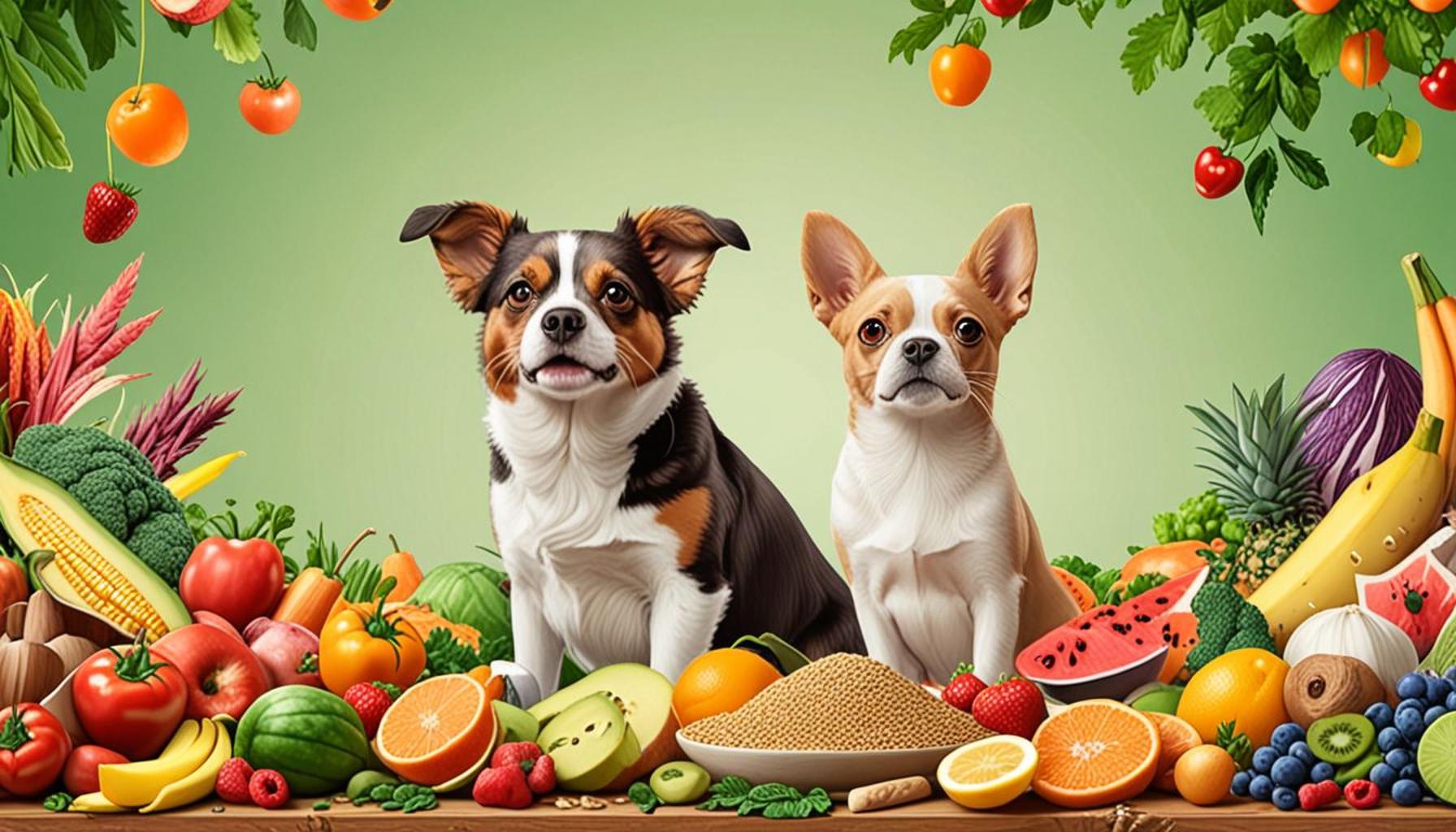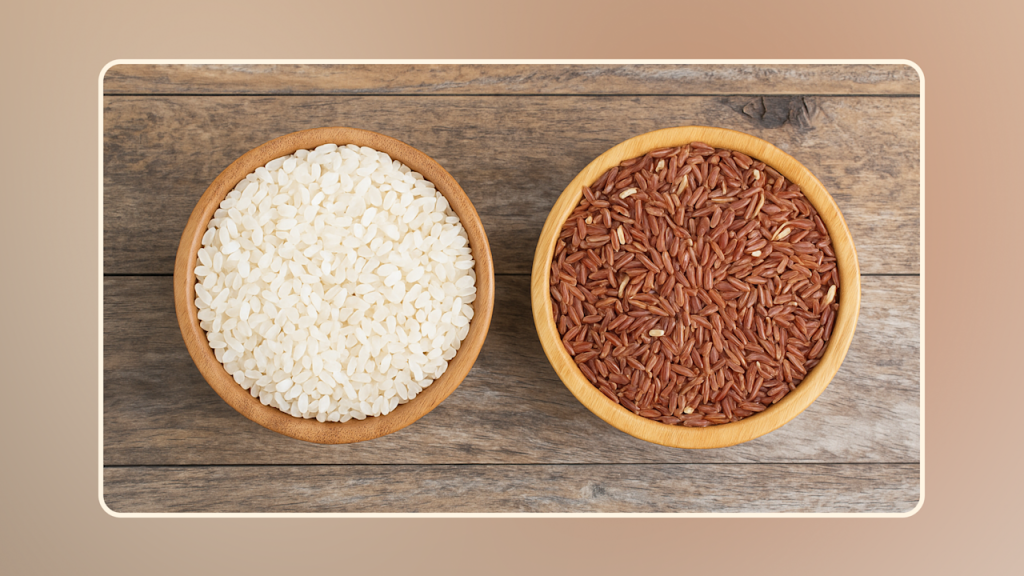Natural Food vs. Commercial Feed: What’s Better for Your Pet?

The Great Debate in Pet Nutrition
As pet owners, we all want the best for our furry companions. The debate over natural food vs. commercial feed has gained significant traction, raising questions about what truly constitutes the healthiest diet for our pets. Each option has its proponents, and understanding the differences is crucial in making informed decisions.
Consider the following key factors when evaluating these feeding options:
- Nutritional Content: Natural foods often boast fresh ingredients rich in essential nutrients, such as proteins from meats, vitamins from vegetables, and healthy fats. This blend can lead to a more balanced diet that may enhance the overall health and vitality of pets.
- Processing Methods: Commercial feeds undergo extensive processing, which can affect their nutrient levels. This includes high-heat cooking and preservatives, potentially diminishing some nutritional qualities. However, many brands strive to maintain nutrient integrity through advanced cooking techniques and retention of essential vitamins.
- Ingredient Sourcing: The quality of ingredients varies widely between brands, impacting overall health benefits. Some commercial feeds use low-grade meats, grains, or fillers, whereas premium options may incorporate human-grade ingredients sourced from trusted suppliers.
Research suggests that a diet rich in whole foods may lead to improved energy levels, healthier coats, and longer lifespans. For example, many owners who have switched their dogs to a raw diet report increased vitality and reduced allergies. On the other hand, many commercial pet foods are scientifically formulated to meet specific dietary needs and often include added vitamins and minerals. For instance, a dog owner might opt for a kibble high in DHA for brain health, particularly important in puppies. This duality leaves pet owners at a crossroads.
Moreover, it’s essential to consider individual pet characteristics such as age, breed, and medical history when choosing a diet. For instance, senior dogs may have different nutritional needs that natural foods alone may not satisfy. Pet owners should consult with a veterinarian to tailor the diet to their specific furry friend’s needs.
In this article, we will delve deeper into the differences, discussing health benefits, potential risks, and the latest findings in pet nutrition. By exploring personal anecdotes from pet owners who have made the transition, as well as expert opinions on dietary trends, you will gain valuable insights. By the end, you will have a clearer perspective on which option might be the best fit for your beloved pet.

DIVE DEEPER: Click here to discover the magic of pet adoption for kids
Understanding Nutritional Profiles
When embarking on the journey of choosing between natural food and commercial feed for your pet, a comprehensive understanding of nutritional profiles is essential. Both options can support your pet’s health, but they do so in notably different ways. The core of these differences lies in their formulations, ingredient sourcing, and the nutritional completeness they offer.
Natural foods, which include raw diets and home-cooked meals, tend to emphasize fresh, high-quality ingredients. These diets typically feature:
- Whole proteins derived from meats and fish, providing essential amino acids crucial for muscle development and overall health.
- Fresh fruits and vegetables, which are packed with vitamins, minerals, and antioxidants that can enhance immunity and contribute to long-term health.
- Healthy fats, such as those derived from fish oil or flaxseed, which play a vital role in maintaining healthy skin and coat, along with proper brain function.
Pet owners who advocate for natural diets often tout various benefits. A key advantage is the enhanced digestibility of whole ingredients compared to processed alternatives. Research indicates that pets consuming a natural diet may experience fewer gastrointestinal issues and improved nutrient absorption. Additionally, pet owners frequently report visible improvements in energy levels, coat condition, and a reduction in allergy symptoms when switching from commercial foods to natural options.
On the other side of the spectrum lies commercial feed. While often criticized for their ingredient quality, today’s commercial pet foods come in various formulations, each designed to cater to specific dietary needs. Higher-end brands frequently utilize:
- Premium ingredients, including high-quality meats and nutrient-rich grains, avoiding fillers and by-products that can detract from a pet’s health.
- Extended shelf-life due to the use of preservatives, allowing for convenience in feeding without the worry of spoilage that can occur with natural foods.
- Formulated diets containing essential nutrients added to meet the recommended dietary allowances established by veterinary nutritionists, making it easier for owners to adhere to specific nutritional guidelines.
Proponents of commercial feed highlight the scientific work that goes into formulating these products. Foods are tested and adjusted to ensure that they meet the precise needs of pets, particularly concerning life stages like puppyhood and seniority. Additionally, a variety of flavors and textures attract picky eaters, making it easier for owners to maintain consistency in their pets’ diets.
As this debate continues, it becomes increasingly clear that both natural and commercial options have their advantages and potential pitfalls. Pet owners must weigh these factors against their pets’ unique dietary requirements, while considering factors such as convenience, preparation, and, crucially, what’s best for their beloved companion’s health.
| Advantage | Details |
|---|---|
| Natural Ingredients | Natural food often includes fresh, whole ingredients that are nutritionally rich without artificial additives. |
| Digestibility | Pets typically digest natural foods more effectively, leading to better nutrient absorption and reduced waste. |
| Allergen Reduction | A diet of natural food can help mitigate food allergies since owners can control what their pets consume. |
| Variety | Natural food allows for diversified diets, incorporating various proteins and vegetables to maintain pets’ interest. |
Exploring the benefits of natural over commercial feed opens up new avenues for pet health and wellness. As pet owners continue to prioritize what fuels their furry friends, the ingredients and nutritional value become essential in the decision-making process.
DON’T MISS: Click here for essential tips
The Impact of Manufacturing Processes
As we dive deeper into the debate surrounding natural food versus commercial feed, it’s crucial to examine the manufacturing processes involved in both options. These processes significantly influence the nutritional value and overall quality of the pet food available on the market today.
Natural foods often undergo minimal processing, preserving much of the nutrient density inherent in the ingredients used. For example, many pet owners who prepare home-cooked meals for their pets focus on using fresh, whole ingredients that have not been subjected to high heat that can destroy vital nutrients. Raw diets, which consist of uncooked meats, bones, and organ meats, prioritize preserving enzymes and vitamins that are beneficial for digestive health. However, this approach does come with considerations regarding food safety, as raw foods can harbor harmful bacteria. Therefore, owners must take care to source high-quality ingredients and follow stringent hygiene protocols during preparation.
On the other hand, commercial feed typically goes through extensive manufacturing processes designed to enhance shelf life and convenience. This includes cooking, extrusion, and sometimes freeze-drying. While these methods can effectively eliminate pathogens and extend the life of the food, they can also result in the degradation of some nutrients, particularly those that are sensitive to heat, such as certain vitamins. Advanced technologies are now being employed by many pet food manufacturers to enrich their products with vitamins and minerals post-processing, attempting to offset any potential losses incurred during production. However, the scale and quick production timelines of commercial feeds can dilute the attention to ingredient quality.
Ingredient Transparency and Regulations
The transparency surrounding the ingredients used in both natural and commercial pet foods has become a significant factor for pet owners. Increasing awareness has prompted many to scrutinize food labels more closely. With natural foods, the clarity of ingredient sourcing is often a top concern. Pet owners often find comfort in directly sourcing ingredients themselves and knowing precisely what goes into their pet’s meals. Resources such as local farmer’s markets and organic food stores have become popular avenues for obtaining grass-fed meats and organic produce.
Commercial pet foods, particularly those from larger manufacturers, must comply with regulations set forth by organizations such as the Association of American Feed Control Officials (AAFCO). These regulations help to ensure a minimum standard of ingredient quality and nutritional adequacy. However, the reliance on ‘meat by-products’ or vague descriptors such as ‘animal fat’ can cause uncertainty among consumers. Many brands are now responding to this demand for transparency by providing detailed information about their ingredient sourcing and manufacturing practices, including the use of whole meats and non-GMO grains.
As pet owners navigate these complex landscapes, it’s evident that both natural foods and commercial feeds come with their unique benefits and challenges. The choice often depends on individual pet health, lifestyle, and owner preferences. Awareness of the manufacturing processes and source transparency is paramount in making informed decisions that will ultimately support a pet’s health and wellbeing.
DISCOVER: Click here to learn about the impact of pet adoption on children
Conclusion: Finding the Right Balance for Your Pet’s Nutrition
In the ongoing debate of natural food versus commercial feed, pet owners face a multifaceted decision that extends beyond mere preferences to encompass health implications and lifestyle choices. Both options have distinct benefits and drawbacks that cater to a wide range of dietary needs and owner philosophies.
On one hand, natural foods represent a holistic approach to pet nutrition, emphasizing fresh, unprocessed ingredients that are rich in vital nutrients. This route allows pet owners to have direct control over what their pets consume, ensuring the quality of their meals. However, as enticing as home-cooked or raw diets may seem, they come with stringent preparation and safety requirements that can challenge even the most diligent pet owners.
Conversely, commercial feed offers convenience and consistency, backed by regulatory standards that aim to ensure a minimum level of nutrition. Innovative manufacturing practices have enabled many brands to enhance their products with essential nutrients. Yet, the industry also faces scrutiny regarding ingredient transparency and potential nutritional losses during processing, raising questions about the long-term health impacts on pets.
Ultimately, the best choice for your furry friend may lie in a careful blend of both philosophies. By combining the nutrition found in natural foods with the fortified benefits of commercial feeds, pet owners can craft a balanced diet that meets their pets’ specific needs. As the market continues to evolve, staying informed and vigilant about ingredient sourcing and nutritional content will empower pet owners to make the most suitable decisions for their beloved companions. Whether you champion a natural approach or lean towards commercial convenience, remember that knowledge is key to ensuring the well-being of your pet. Explore the resources, engage with veterinarian professionals, and always prioritize your pet’s health.



